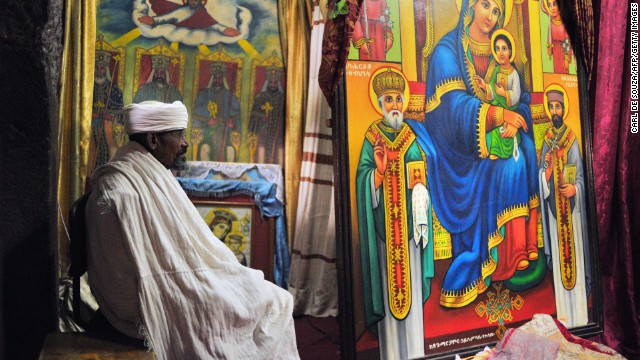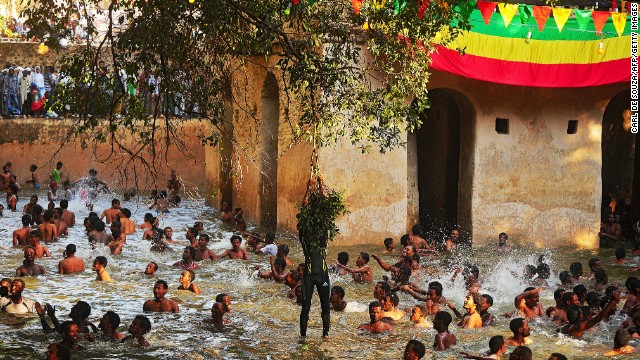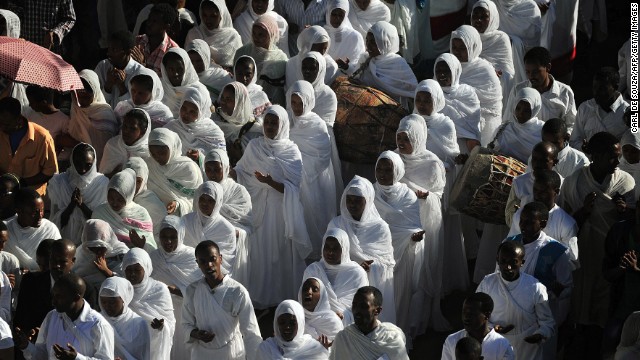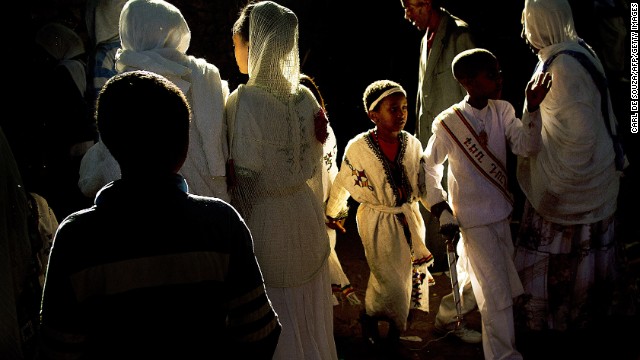



France has Lourdes, India has the Ganges. Ethiopia, meanwhile, has Gondar.
Situated about 450 miles
north of Addis Ababa, encapsulated by hills and tall trees, and dotted
with 17th-century relics from the city's glory days (when it was the
country's capital), Gondar today can seem somewhat remote. During the
religious festival of "Timket," however, the city is inundated with
pilgrims who come to re-enact the baptism of Jesus in the River Jordan,
and take a dip in the holy waters at the historical Fasilides Bath.
Nearly two thirds of
Ethiopia's 94 million population is Christian, and the majority of those
belong to the Orthodox church. For them, Timket -- celebrating the
Epiphany -- is among the most important occasions of the year. It's is a
two-day affair that begins with a procession of "tabots," holy replicas
of the Ark of the Covenant -- the sacred chests described in the Book
of Exodus as carrying the stone tablets on which the 10 Commandments
were written.
The tabots are wrapped in
cloth and placed on the heads of Ethiopian Orthodox Christian priests,
who parade the streets en route to the bath. The priests, clad in
ceremonial robes, are escorted by drums and by the clapping and singing
of worshipers, who hold an overnight vigil until dawn.
There are services the
following morning which culminate in the priests blessing the waters of
the historic bath, while onlookers crowd every nook surrounding the bath
-- some getting a pristine view from nearby trees.
When the priests are done, the mood turns jubilant, and the spectators rush to jump into the pool.
The water is now sacred, and the sick shall be cured
Ezra Adis, head priest
Ezra Adis, head priest
"The water is blessed in
the name of the Holy Trinity ... in the name of God. The water is now
sacred, and the sick shall be cured," explains Ezra Adis, the head
priest at the local Medhanelem Church.
"That is why the young people who jump in first get excited; it is a spiritual love," he adds.
"I jumped from high above," boasts one man who dived into the waters from one of the nearby trees.
"I was apprehensive," he
adds. "The branches could give way and you could fall on the rock edge
of the pool, and there was a possibility I could have lost my life, but
at this moment, I am doing what I feel good about, and that possibility
of death doesn't scare me."
The Timket festival
dates back to the 16th century, but it was marked only in churches until
the baptismal ceremonies were introduced, explains Bantalem Tadesse
Tedla, a historian at the University of Gondar.
The baptisms, usually
held on January 19, are celebrated differently in other parts of the
country. "There are three options for Timket," says Tedla. "To be
immersed, to collect water from three pipes and pour it on people, or to
collect water and sprinkle it -- it depends on the availability of
water.
"In Gondar, the first is
implemented, because of the existence of this very important building,"
he adds, referring to the stone bath -- a UNESCO world heritage site
built in 1632 for King Fasil (Fasiledes).
As the afternoon winds
down, people begin to leave the pool and head back to the streets, but
the festivities aren't quite over. Each tabot is now paraded back to its
respective church with crowds of onlookers eager to get one last look
at them.
Back at the churches,
it's a different, quieter scene. Congregants fill the church grounds to
listen in on a final service, and after a closing prayer it's time to
send the tabot back inside the church to its resting place.
The locals will
eventually return to their homes for a special feast, but in the
meantime, the celebrations on the streets of Gondar continue -- a chance
for orthodox Christians to celebrate and come together for one of the
most sacred and festive days of the year.
SOURCE:www.cnn.com
No comments:
Post a Comment